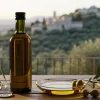Olive oil has been a cornerstone of both cuisines and cultures throughout history. However, the packaging used to transport, store, and present it is an inseparable part of its story. From ancient amphorae to earthen jars, and from simple pots to modern glass bottles, this transformation reflects the quest to preserve olive oil’s value while adding elegance. Let’s explore the evolution of olive oil packaging through time.
Ancient Times: The Elegance of Amphorae
In ancient Greece and Rome, olive oil was primarily stored in clay amphorae. These large, graceful vessels facilitated easy transport and were key to long-distance trade. With their narrow necks and wide bodies, amphorae protected olive oil from external elements, preserving its freshness for extended periods. Beyond their functionality, these amphorae, often adorned with intricate patterns, were works of art in their own right.
The Middle Ages: Pots and Jars
During the Middle Ages, as local production grew, olive oil was stored in smaller-scale containers. Earthen pots and simple jars became ideal for households, particularly in Mediterranean regions. Made from natural, durable materials, these vessels effectively preserved the oil’s aroma and quality.
The Rise of Glass: Elegance in Bottles
The 19th century marked a new era for olive oil with the rise of glass bottle production. Glass bottles showcased the oil’s natural color and clarity, adding an elegant touch to tables with their golden hue. However, it was later discovered that light could degrade olive oil, leading to the widespread use of dark-colored glass bottles. Green and brown bottles not only preserved the oil’s quality but also brought a refined aesthetic to dining tables.
Modern Era: Style Meets Functionality
Today, olive oil packaging strikes a delicate balance between aesthetics and functionality. Minimalist glass bottles, practical metal tins, and designs featuring natural wooden accents protect the oil’s quality while enhancing the dining experience. With growing awareness of sustainability, packaging made from recyclable materials is also gaining prominence.
Beyond Packaging: Traces of a Culture
Olive oil packaging is more than just a container; it is a reflection of evolving tastes, technologies, and lifestyles throughout history. From jars to bottles, from pots to modern designs, this journey mirrors the value and respect given to olive oil. The elegant bottles we use today carry echoes of the past while contributing to a sustainable future.
Just like every drop of olive oil, the bottles that hold it bring a touch of cultural elegance to our tables. Thus, the journey of olive oil is not only from the field but also through the masterfully crafted bottles that carry it.




